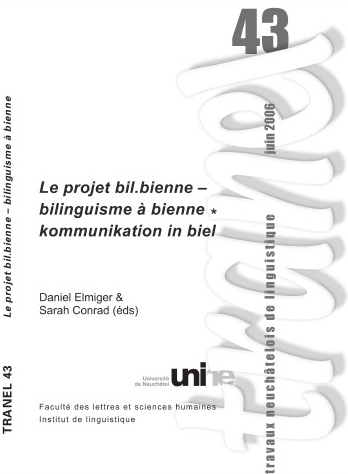Perceptions du bilinguisme officiel et interactions bilingues à Biel/Bienne et Fribourg/Freiburg
DOI :
https://doi.org/10.26034/tranel.2006.2720Résumé
In officially quadrilingual Switzerland, due to the controversially discussed so-called principle of territoriality, not many of the approximately 2800 municipalities have an official bilingual status. The most often cited and described bilingual examples are Biel/Bienne and Fribourg/Freiburg. These municipalities manage their linguistic and cultural heterogeneity quite differently; this fact greatly influences the definition of official languages and the public discourse on the interpretation and the semantic range of the concept. In officially bilingual Biel/Bienne, service encounters in the public and semipublic sector (administration, public services, shops, restaurants etc.) is client-oriented, the customer with his/her opening turn chooses the language of interaction. However, in officiously bilingual Fribourg/Freiburg, French is – more often than not – the default language. The same pattern applies for information seeking in the streets, the person giving the information adapting to the same pattern of interaction, linguistic adaptation in Biel/Bienne, and maintaining of French in Fribourg/Freiburg. This article discusses oral and written, private and public discourse on the degree of officiality of the two languages and the impact of language choice in the two cities. It is assumed that the latter in fact mirrors public language discourse and that opinion leaders coin the prevailing situation.


